Abstract: Application Note 394 contains guidelines showing how to use the necessary operation modes inside our framers, transceivers or single-chip transceivers (SCTs) to route HDLC data. This application note lists the register descriptions of different operation modes of our different framers and transceivers, enabling the user to select the proper configuration.
This application note applies to the following products:
Table 1-1. HDLC Control Registers
The following tables list the different configurations that exist for the HDLC inside the DS21352, DS21552, and DS21Q42 devices. Throughout this section, the terms DS0, time slot, and channel refer to a single 64kbps data stream and can be used interchangeably.
X = don't care
Table 1-3. Transmit control register bit and channel selection
X = don't care
X = don't care
Table 1-5. Receive control register bit and channel selection
X = don't care
Table 1-6. Legacy FDL Control Registers
Table 2-1. HDLC Control Registers
The tables below list the different configurations that exist for the HDLC inside the DS21354, DS21554, and DS21Q44 devices. Throughout this section, the terms DS0, time slot, and channel refer to a single 64kbps data stream and can be used interchangeably.
X = don't care
Table 2-3. Transmit control register bit and channel selection
X = don't care
X = don't care
Table 2-5. Receive control register bit and channel selection
X = don't care
In addition to controlling which time slots data is routed through, any combination of bits within the time slots can be blocked to limit data flow in the time slots. This is accomplished by configuring the transmit and receive HDLC control registers #2 (TDC2 at address 0x93 and RDC2 at address 0x91) to block the unused bits. See Tables 3-1 and 3-2 for details about blocking unused bits in each time slot.
Table 3-1. Transmit HDLC DS0 bit suppression
A = 0 (active), 1 (inactive)
Table 3-2. Receive HDLC DS0 bit suppression
A = 0 (active), 1 (inactive)
Table 4-1. HDLC control registers
The tables below list the different configurations for the HDLC controllers inside the DS2155 and DS2156 devices. Throughout this section, the terms DS0, time slot, and channel refer to a single 64kbps data or voice stream and can be used interchangeably. It should also be noted that the two HDLC controllers should not be mapped simultaneously to the FDL in T1 mode, the same Sa bits in E1 mode, or the same time slots.
X = don't care, NA = not applicable, CE = channel enables
Table 4-3. Transmit HDLC Sa bit selection in E1 mode
X = don't care; SaX = 0 (disable), 1 (enable)
Table 4-4. Transmit HDLC DS0 channel selection
X = don't care; C = 0(deselect channel), 1 (select channel)
Table 4-5. Transmit HDLC DS0 bit suppression
A = 0 (active), 1 (inactive)
X = don't care, NA = not applicable, CE = channel enables
Table 4-7. Receive HDLC Sa bit selection in E1 mode
X = don't care; SaX = 0 (disable), 1 (enable)
Table 4-8. Receive HDLC DS0 channel selection
X = don't care; C = 0(deselect channel), 1 (select channel)
Table 4-9. Receive HDLC DS0 bit suppression
A = 0 (active), 1 (inactive)
Table 4-10. Legacy FDL Control Registers
This application note applies to the following products:
| FRAMERS | SCTs | |||
| T1 | E1 | T1 | E1 | T1/E1/J1 |
| DS21Q42 | DS21Q44 | DS21352 | DS21354 | DS2155 |
| DS21FT42 | DS21FT44 | DS21552 | DS21554 | DS2156 |
| DS21FF42 | DS21FF44 | DS21Q352 | DS21Q354 | DS21Q55 |
| DS21Q552 | DS21Q554 | DS21E55 | ||
1. DS21352, DS21552, and DS21Q42
The DS21352, DS21552, and DS21Q42 have the ability to route the HDLC data through the facilities data link (FDL) via a single DS0 or multiple DS0s. Table 1-1 shows the registers used for selecting HDLC operational mode. While the HDLC transmitter can be disabled, the HDLC receiver cannot. If operation of the HDLC receiver is not desired, it can be ignored without affecting the system.Table 1-1. HDLC Control Registers
| REGISTER | HDLC ADDRESS | FUNCTION |
| TDC1 | 0x92 | Transmit HDLC control register #1 |
| RDC1 | 0x90 | Receive HDLC control register #1 |
| TBOC | 0x07 | Transmit BOC control register |
| TCR1 | 0x35 | Transmit control register #1 |
| TCBR1 ... TCBR3 |
0x32 ... 0x34 |
Transmit channel blocking registers/Transmit HDLC channel selection registers |
| RCBR1 ... RCBR3 |
0x6C ... 0x6E |
Receive channel blocking registers/Receive HDLC channel selection registers |
The following tables list the different configurations that exist for the HDLC inside the DS21352, DS21552, and DS21Q42 devices. Throughout this section, the terms DS0, time slot, and channel refer to a single 64kbps data stream and can be used interchangeably.
HDLC Transmit Configuration
Table 1-2. Transmit control register mode selection| Mode | TDC1.7 | TDC1.5 | TBOC.6 | TCR1.2 | FUNCTION |
| TDS0E | TDS0M | HBEN | TFDLS | ||
| 0 | 0 | X | 0 | X | Disable transmit HDLC |
| 1 | 0 | X | 1 | 1 | HDLC routed through the FDL |
| 2 | 1 | 0 | 0 | X | HDLC routed through a single DS0 |
| 3 | 1 | 1 | 0 | X | HDLC routed through multiple DS0s |
Table 1-3. Transmit control register bit and channel selection
| Mode | TDC1.4 | TDC1.3 | TDC1.2 | TDC1.1 | TDC1.0 | FUNCTION |
| TD4 | TD3 | TD2 | TD1 | TD0 | ||
| 1 | Sa4 | Sa5 | Sa6 | Sa7 | Sa8 | Sa bit routing defined by TD4-TD0 |
| 2 | Bit4 | Bit3 | Bit2 | Bit1 | Bit0 | DS0 routing defined by TD4-TD0 |
| 3 | X | X | X | X | X | DS0s routing defined by TCBR1-TCBR4 |
HDLC Receive Configuration
Table 1-4. Receive control register mode selection| Mode | RDC1.7 | RDC1.5 | FUNCTION |
| RDS0E | RDS0M | ||
| 0 | 0 | X | HDLC routed through the FDL |
| 1 | 1 | 0 | HDLC routed through a single DS0 |
| 2 | 1 | 1 | HDLC routed through multiple DS0s |
Table 1-5. Receive control register bit and channel selection
| Mode | TDC1.4 | TDC1.3 | TDC1.2 | TDC1.1 | TDC1.0 | FUNCTION |
| RD4 | RD3 | RD2 | RD1 | RD0 | ||
| 0 | X | X | X | X | X | HDLC routed through the FDL |
| 2 | Bit4 | Bit3 | Bit2 | Bit1 | Bit0 | DS0 routing defined by RD4-RD0 |
| 3 | X | X | X | X | X | DS0s routing defined by RCBR1-RCBR4 |
Legacy FDL Configuration
When using the internal HDLC and BOC controller to route data through the FDL, the legacy FDL circuitry should be disabled. Table 1-6 shows a listing of the legacy FDL registers and how to program them to disable legacy FDL operation.Table 1-6. Legacy FDL Control Registers
| REGISTER | NAME | VALUE | FUNCTION |
| TCR1.2 | TFDLS | 1 | Source FDL data from the HDLC and BOC controller |
| TBOC.6 | HBEN | 1 | Enable HDLC and BOC controller |
| CCR2.5 | TSLC96 | 0 | Disable SLC-96 and D4 Fs-bit insertion |
| CCR2.4 | TFDL | 0 | Disable legacy transmit FDL zero destuffer |
| CCR2.1 | RSLC95 | 0 | Disable SLC-96 reception |
| CCR2.0 | RZSE | 0 | Disable legacy receive FDL zero destuffer |
| IMR2.4 | RFDL | 0 | Disable legacy receive FDL buffer full interrupt |
| IMR2.3 | TFDL | 0 | Disable legacy transmit FDL zero stuffer |
| IMR2.2 | RMTCH | 0 | Disable legacy FDL match interrupt |
| IMR2.1 | RAF | 0 | Disable legacy FDL abort interrupt |
2. DS21354, DS21554, DS21Q44
The DS21354, DS21554, and DS21Q44 can route the HDLC data through the Sa bit positions (Sa4 to Sa8) via a single DS0 or multiple DS0s. Operational mode selection of the HDLC is accomplished using the registers described in Table 2-1. While the HDLC transmitter can be disabled, the HDLC receiver cannot. If operation of the HDLC receiver is not desired, it can be ignored without affecting the system.Table 2-1. HDLC Control Registers
| REGISTER | HDLC ADDRESS | FUNCTION |
| TDC1 | 0xBA | Transmit HDLC control register #1 |
| RDC1 | 0xB8 | Receive HDLC control register #1 |
| RCR2 | 0x11 | Receive control register #2 |
| TCBR1 ... TCBR4 |
0x22 ... 0x25 |
Transmit channel blocking registers/Transmit HDLC channel selection registers |
| RCBR1 ... RCBR4 |
0x2B ... 0x2E |
Receive channel blocking registers/Receive HDLC channel selection registers |
The tables below list the different configurations that exist for the HDLC inside the DS21354, DS21554, and DS21Q44 devices. Throughout this section, the terms DS0, time slot, and channel refer to a single 64kbps data stream and can be used interchangeably.
HDLC Transmit Configuration
Table 2-2. Transmit control register mode selection| Mode | TDC1.7 | TDC1.6 | TDC1.5 | FUNCTION |
| THE | TSaDS | TDS0M | ||
| 0 | 0 | X | X | Disable transmit HDLC |
| 1 | 1 | 0 | X | HDLC routed through the Sa bits |
| 2 | 1 | 1 | 0 | HDLC routed through a single DS0 |
| 3 | 1 | 1 | 1 | HDLC routed through multiple DS0s |
Table 2-3. Transmit control register bit and channel selection
| Mode | TDC1.4 | TDC1.3 | TDC1.2 | TDC1.1 | TDC1.0 | FUNCTION |
| TD4 | TD3 | TD2 | TD1 | TD0 | ||
| 1 | Sa4 | Sa5 | Sa6 | Sa7 | Sa8 | Sa bit routing defined by TD4-TD0 |
| 2 | Bit4 | Bit3 | Bit2 | Bit1 | Bit0 | DS0 routing defined by TD4-TD0 |
| 3 | X | X | X | X | X | DS0s routing defined bt TCBR1-TCBR4 |
HDLC Receive Configuration
Table 2-4. Receive control register mode selection| Mode | RDC1.7 | RDC1.6 | RDC1.5 | FUNCTION |
| RHS | RSaDS | RDS0M | ||
| 0 | 0 | X | X | HDLC routed through the Sa bits with RLCLK active |
| 1 | 1 | 0 | X | HDLC routed through the Sa bits |
| 2 | 1 | 1 | 0 | HDLC routed through a single DS0 |
| 3 | 1 | 1 | 1 | HDLC routed through multiple DS0s |
Table 2-5. Receive control register bit and channel selection
| Mode | TDC1.4 | TDC1.3 | TDC1.2 | TDC1.1 | TDC1.0 | FUNCTION |
| RD4 | RD3 | RD2 | RD1 | RD0 | ||
| 0 | X | X | X | X | X | Sa bit routing defined by RCR2.3-RCR2.7 |
| 1 | Sa4 | Sa5 | Sa6 | Sa7 | Sa8 | Sa bit routing defined by RD4-RD0 |
| 2 | Bit4 | Bit3 | Bit2 | Bit1 | Bit0 | DS0 routing defined by RD4-RD0 |
| 3 | X | X | X | X | X | DS0s routing defined by RCBR1-RCBR4 |
3. DS21354, DS21554, and DS21Q44; DS21352, DS21552, and DS21Q42
HDLC General Time Slot Configuration
When using the HDLC to route data through a single time slot or multiple time slots, there are two ways to assign which of the 32 time slots carry data. When only using a single time slot to route data, it can be defined by the TD4-TD0 and RD4-RD0 bits in the TDC1 and RDC1 registers, respectively. When using multiple time slots to route data, the channel blocking registers TCHBLK and RCHBLK are used for assigning which time slots are used for routing data.In addition to controlling which time slots data is routed through, any combination of bits within the time slots can be blocked to limit data flow in the time slots. This is accomplished by configuring the transmit and receive HDLC control registers #2 (TDC2 at address 0x93 and RDC2 at address 0x91) to block the unused bits. See Tables 3-1 and 3-2 for details about blocking unused bits in each time slot.
Table 3-1. Transmit HDLC DS0 bit suppression
| TDC2.7 | TDC2.6 | TDC2.5 | TDC2.4 | TDC2.3 | TDC2.2 | TDC2.1 | TDC2.0 | FUNCTION |
| TDB8 | TDB7 | TDB6 | TDB4 | TDB3 | TDB2 | TDB1 | TDB0 | |
| A | A | A | A | A | A | A | A | DS0 Block Bits |
Table 3-2. Receive HDLC DS0 bit suppression
| RDC2.7 | RDC2.6 | RDC2.5 | RDC2.4 | RDC2.3 | RDC2.2 | RDC2.1 | RDC2.0 | FUNCTION |
| RDB8 | RDB7 | RDB6 | RDB4 | RDB3 | RDB2 | RDB1 | RDB0 | |
| A | A | A | A | A | A | A | A | DS0 Block Bits |
4. DS2155 and DS2156
The DS2155 and DS2156 have two HDLC controllers that have the ability to route the HDLC data through data via the FDL in T1 mode, the Sa bit positions (Sa4 to Sa8) in E1 mode, via a single DS0, or multiple DS0s. The two HDLC controllers, HDLC #1 and HDLC #2, are independently controlled by two sets of identical registers. Selection for the HDLC operation mode is accomp lished using the registers described in Table 4-1.Table 4-1. HDLC control registers
| REGISTER | HDLC #1 ADDRESS | HDLC #2 ADDRESS | FUNCTION |
| HxTC | 0x90 | 0xA0 | Transmit HDLC control register |
| HxRC | 0x31 | 0x32 | Receive HDLC control register |
| HxTTSBS | 0x9B | 0xAB | Transmit HDLC Sa/DS0 bit selection register |
| HxRTSBS | 0x96 | 0xA6 | Receive HDLC Sa/DS0 bit selection register |
| HxTCS1 ... HxTCS4 |
0x97 ... 0x9A |
0xA7 ... 0xAA |
Transmit HDLC channel selection registers |
| HxRCS1 ... HxRCS4 |
0x92 ... 0x95 |
0xA2 ... 0xA5 |
Receive HDLC channel selection registers |
The tables below list the different configurations for the HDLC controllers inside the DS2155 and DS2156 devices. Throughout this section, the terms DS0, time slot, and channel refer to a single 64kbps data or voice stream and can be used interchangeably. It should also be noted that the two HDLC controllers should not be mapped simultaneously to the FDL in T1 mode, the same Sa bits in E1 mode, or the same time slots.
HDLC Transmit Configuration
Table 4-2. Transmit control register mode selection| MSTRREG.1 | HxTC.4 | HxTCS1/2/3/4 | FUNCTION |
| T1/E1 | THMS | ||
| X | 0 | 0x00 | Disable transmit HDLC |
| 0 | 1 | NA | HDLC routed through the FDL |
| 1 | 1 | NA | HDLC routed through the Sa bits |
| X | 0 | CE | HDLC routed through single/multiple DS0 |
Table 4-3. Transmit HDLC Sa bit selection in E1 mode
| HxTTSBS.7 | HxTTSBS.6 | HxTTSBS.5 | HxTTSBS.4 | HxTTSBS.3 | HxTTSBS.2 | HxTTSBS.1 | HxTTSBS.0 |
| TCB8SE | TCB7SE | TCB6SE | TCB5SE | TCB4SE | TCB3SE | TCB2SE | TCB1SE |
| X | X | X | Sa4 | Sa5 | Sa6 | Sa7 | Sa8 |
Table 4-4. Transmit HDLC DS0 channel selection
| MODE | HxTCS1 | HxTCS2 | HxTCS3 | HxTCS4 |
| Channels 8-1 | Channels 16-9 | Channels 24-17 | Channels 32-25 | |
| T1 | CCCCCCCC | CCCCCCCC | CCCCCCCC | XXXXXXXX |
| E1 | CCCCCCCC | CCCCCCCC | CCCCCCCC | CCCCCCCC |
Table 4-5. Transmit HDLC DS0 bit suppression
| HxTTSBS.7 | HxTTSBS.6 | HxTTSBS.5 | HxTTSBS.4 | HxTTSBS.3 | HxTTSBS.2 | HxTTSBS.1 | HxTTSBS.0 |
| TCB8SE | TCB7SE | TCB6SE | TCB5SE | TCB4SE | TCB3SE | TCB2SE | TCB1SE |
| A | A | A | A | A | A | A | A |
HDLC Receive Configuration
Table 4-6. Receive control register mode selection| MSTRREG.1 | HxTC.4 | HxTCS1/2/3/4 | FUNCTION |
| T1/E1 | THMS | ||
| X | 0 | 0x00 | Disable transmit HDLC |
| 0 | 1 | NA | HDLC routed through the FDL |
| 1 | 1 | NA | HDLC routed through the Sa bits |
| X | 0 | CE | HDLC routed through single/multiple DS0 |
Table 4-7. Receive HDLC Sa bit selection in E1 mode
| HxRTSBS.7 | HxRTSBS.6 | HxRTSBS.5 | HxRTSBS.4 | HxRTSBS.3 | HxRTSBS.2 | HxRTSBS.1 | HxRTSBS.0 |
| RCB8SE | RCB7SE | RCB6SE | RCB5SE | RCB4SE | RCB3SE | RCB2SE | RCB1SE |
| X | X | X | Sa4 | Sa5 | Sa6 | Sa7 | Sa8 |
Table 4-8. Receive HDLC DS0 channel selection
| MODE | HxRCS1 | HxRCS2 | HxRCS3 | HxRCS4 |
| Channels 8-1 | Channels 16-9 | Channels 24-17 | Channels 32-25 | |
| T1 | CCCCCCCC | CCCCCCCC | CCCCCCCC | XXXXXXXX |
| E1 | CCCCCCCC | CCCCCCCC | CCCCCCCC | CCCCCCCC |
Table 4-9. Receive HDLC DS0 bit suppression
| HxRTSBS.7 | HxRTSBS.6 | HxRTSBS.5 | HxRTSBS.4 | HxRTSBS.3 | HxRTSBS.2 | HxRTSBS.1 | HxRTSBS.0 |
| RCB8SE | RCB7SE | RCB6SE | RCB5SE | RCB4SE | RCB3SE | RCB2SE | RCB1SE |
| A | A | A | A | A | A | A | A |
Legacy FDL Configuration
When using the internal HDLC and BOC controller to route data through the FDL in T1 mode, the legacy FDL circuitry should be disabled. Table 22 shows a listing of the legacy FDL registers and how to program them to disable legacy FDL operation.Table 4-10. Legacy FDL Control Registers
| BITMAP | NAME | VALUE | FUNCTION |
| T1TCR1.2 | TFDLS | 1 | Source FDL data from the HDLC controller |
| T1TCR2.6 | TSCL96 | 0 | Disable SLC-96 and D4 Fs-bit insertion |
| T1TCR2.5 | TZSE | 0 | Disable legacy transmit FDL zero destuffer |
| T1RCR2.4 | RSLC96 | 0 | Disable SLC-96 reception |
| T1RCR2.3 | RZSE | 0 | Disable legacy receive FDL zero destuffer |
| IMR8.3 | RFDLF | 0 | Disable legacy receive FDL buffer full interrupt |
| IMR8.2 | TFDLE | 0 | Disable legacy transmit FDL zero stuffer |
| IMR8.1 | RMTCH | 0 | Disable legacy FDL match interrupt |
| IMR8.4 | RFDLAD | 0 | Disable legacy FDL abort interrupt |
 電子發燒友App
電子發燒友App










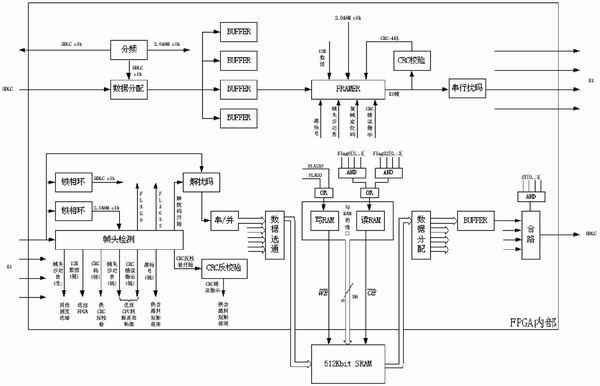
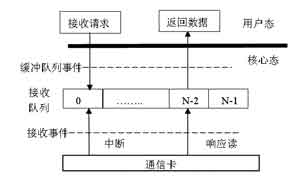
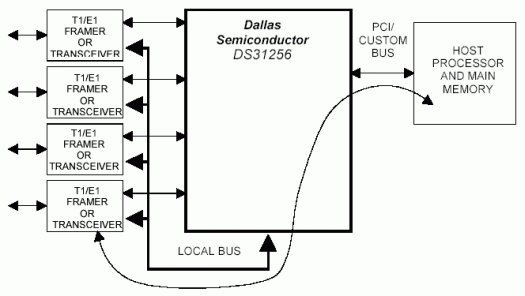
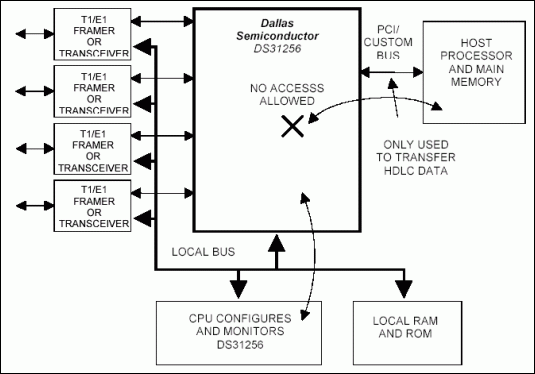
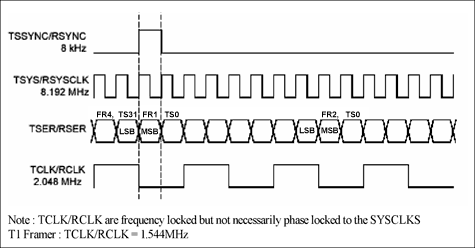
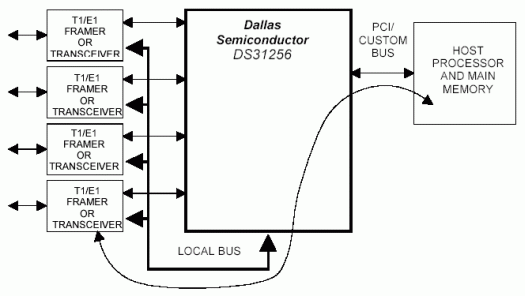
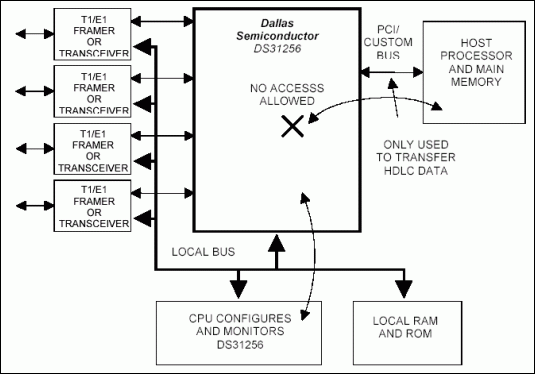
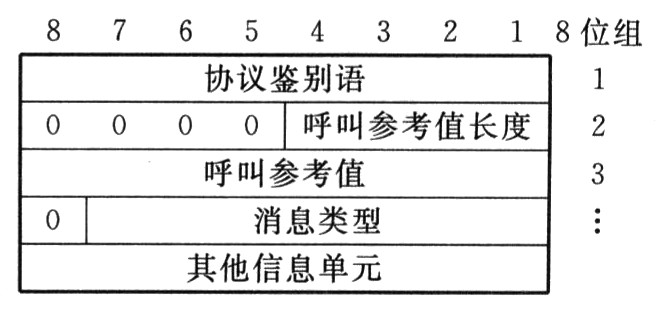
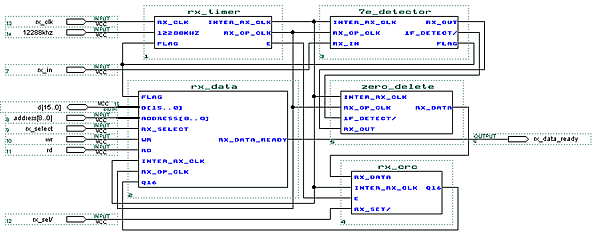
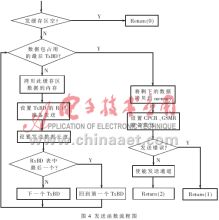


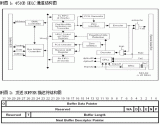



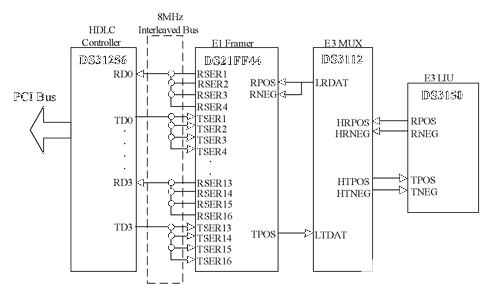











評論